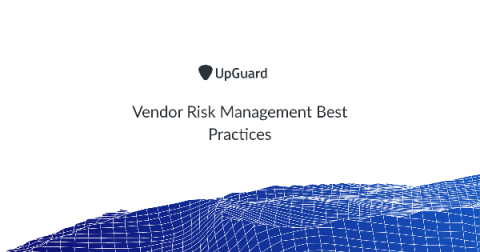Security | Threat Detection | Cyberattacks | DevSecOps | Compliance
Risk Management
Best Practices in Cyber Supply Chain Risk Management
Cyber supply chain risk management touches all aspects of a business. Supply chain risk management (SCRM) is not solely the responsibility of cybersecurity, but instead a partnership between sourcing, vendor management, cybersecurity, and transportation. The National Institute of Standards and Technology (NIST) released a set of best practices for cyber supply chain risk management in 2016.
How to Manage Third-Party Risk
Engaging with third-party vendors for the provision of goods and services isn't new. The level of digital transformation, paired with the number of third-party relationships and business partners the average organization has is. Third-party risk management programs need to evolve the manage this ever evolving type of risk exposure. Enterprise-wide organizations rely on third and fourth-party vendors. And many of them have access to sensitive data.
The Difference Between Strategic and Operational Risk
Strategic risk and operational risk are both valuable to organizations and are critical in managing an organization’s overall risk management program. Organizations are finding that strategic risk management is something that can’t be done the same old way and requires new creative thinking in order to execute successfully. Operational Risk Management is important to make sure there are plans in place to remove roadblocks in order for organizations to execute against their strategic plans.
The Debut of Advanced ZenGRC Risk Mangement
Reciprocity’s mission is to connect the people, processes, and technologies critical to our customers information security risk and compliance management. As InfoSec becomes increasingly more complex, our customers want to become more agile in their risk management strategy. It is important for them to have better visibility and be able to respond to changes quickly.
Vendor Risk Management Best Practices
Vendor risk management is hard. And it's getting harder. But it doesn't have to be. Business units are outsourcing more of their operations to third-party suppliers. In turn, these suppliers outsource to their own service providers. It's undeniable, the average organization's exposure to third-party risk and fourth-party risk has never been higher.
The Vendor Security Assessment (VSA): What You Need to Know
Requesting that a SaaS company answer a Vendor Security request has become a regular thing for companies who work in the cloud. But have you thought about how the reverse works, that is, when your customer has a VSA process focusing on you?
The Importance of Third-Party Vendor Risk Management for the Banking Industry
Today’s banks and financial institutions closely cooperate with various third-party vendors. While such cooperation brings a lot of benefits, it also raises some significant concerns regarding the security of the data and resources these vendors have access to. In fact, according to Verizon’s 2019 Data Breach Investigations Report, the financial sector is among the most targeted, accounting for about 10% of all data breaches across all industries in 2018.
Ignyte UFCU testimonial video
Top 5 Predictions for InfoSec GRC in 2020
January 1 ushers in a new year, a new decade, and new challenges—as well as new dimensions and re-ordering of existing challenges. Reciprocity’s Team of GRC Experts share likely developments, trends to watch out for, and how your organization can navigate Information Security Risk, & Compliance in 2020. With foresight, an organization can proactively take steps to address the challenges of the future.








